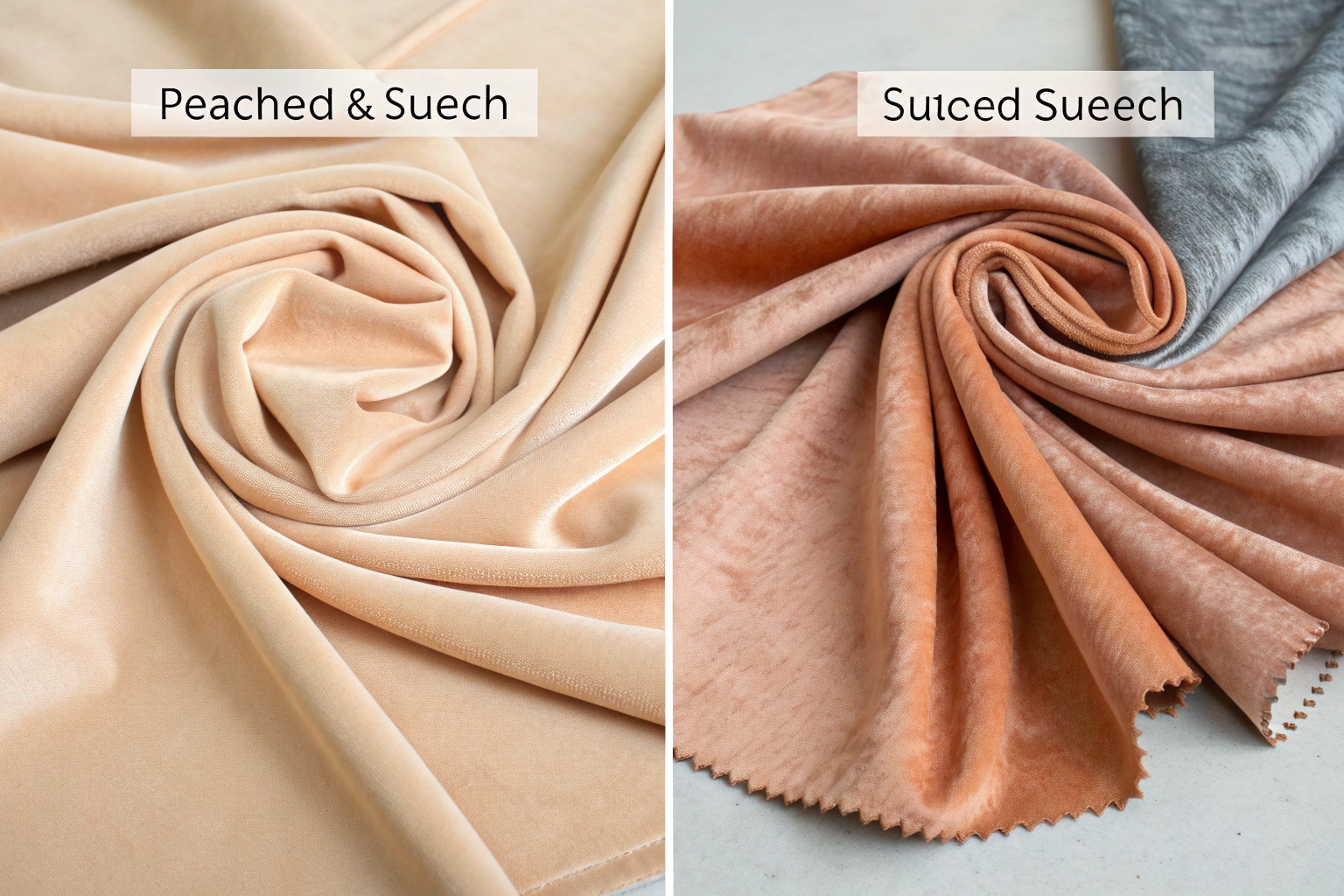If you're sourcing fabrics for your fashion line, you've likely encountered terms like "peaching" and "sueding." You might be wondering what these processes are and how they can add value to your collection. As a fabric manufacturer with over two decades in the heart of China's textile district, I see firsthand how these finishes transform basic materials into premium products that brands love.
Peaching and sueding are mechanical finishing techniques that alter the surface of a fabric to create an ultra-soft, brushed handfeel. Peaching gives a subtle, peach-skin-like texture, while sueding creates a more pronounced, suede-like nap. The main difference lies in the intensity and the resulting aesthetic. Understanding these finishes is key to selecting the right fabric for garments where comfort and a luxury feel are paramount.
Let's dive into the specifics of these popular fabric treatments and explore how they can benefit your business.
What is the peaching fabric finish process?
Peaching is a delicate art. It involves passing the fabric over a series of rotating rollers wrapped with fine abrasive paper. This action gently raises the fibers on the surface, creating a short, consistent nap. The result is a surface that is incredibly soft to the touch, reminiscent of the skin of a peach. This process is especially popular with synthetic fabrics like polyester and nylon, giving them a natural, comfortable feel that defies their man-made origins.
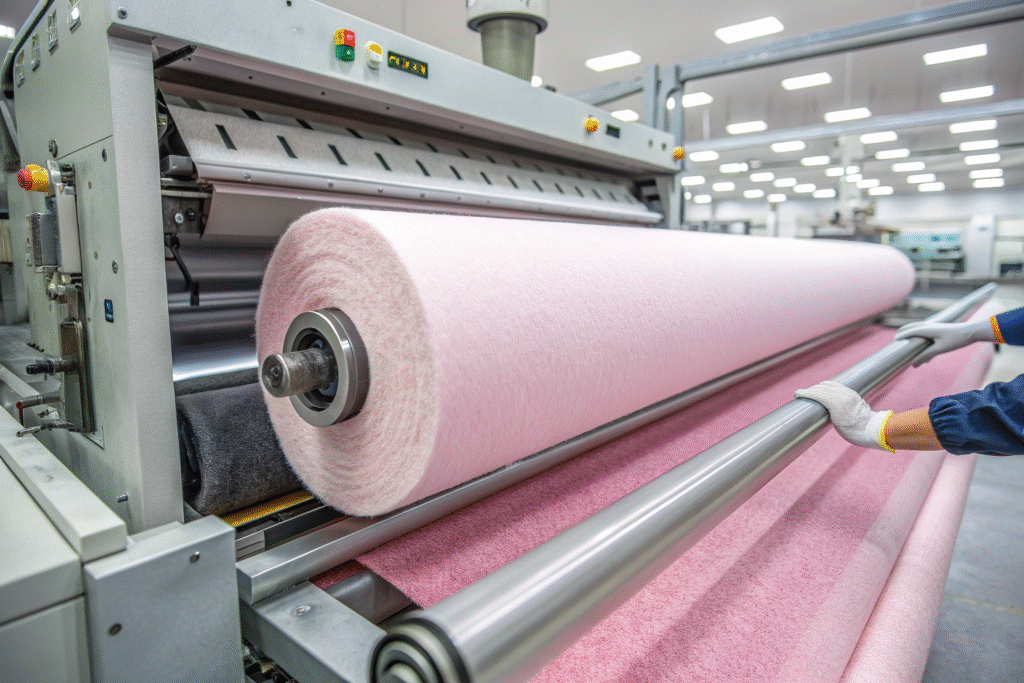
How does peaching enhance fabric performance?
Peaching does more than just make fabric feel nice. It actually improves the fabric's performance in several key areas. The raised fibers create a layer of still air on the surface, which provides a degree of thermal insulation. This makes peached fabrics ideal for lightweight jackets and cool-weather athletic wear. Furthermore, the textured surface is more effective at hiding minor wrinkles and wear, making garments more durable and travel-friendly. For activewear, this soft surface also contributes to comfort during movement, a reason why many leading brands specify this finish.
What types of fabric are best for peaching?
While many fabrics can be peached, some are more suited to the process than others. Microfiber polyester is a prime candidate because its ultra-fine filaments create an exceptionally uniform and velvety nap. This is a staple in our high-performance sportswear offerings. Similarly, high-quality nylon fabrics used in swimwear and outerwear also take well to peaching, gaining a luxurious handfeel without compromising their inherent strength and water resistance. At our CNAS-certified lab, we rigorously test the base fabric's strength to ensure it can withstand the peaching process without compromising its integrity.
What is the sueding fabric finish method?
Sueding is a more aggressive cousin to peaching. It uses rollers with coarser abrasives to create a longer, denser, and more pronounced nap. The goal is to mimic the soft, fuzzy surface of suede leather. This process is often used on heavier knitted fabrics and robust wovens to produce a thick, plush texture. The level of sueding can be adjusted, allowing us to create anything from a light brush to a heavy, fleece-like pile, depending on the customer's vision.
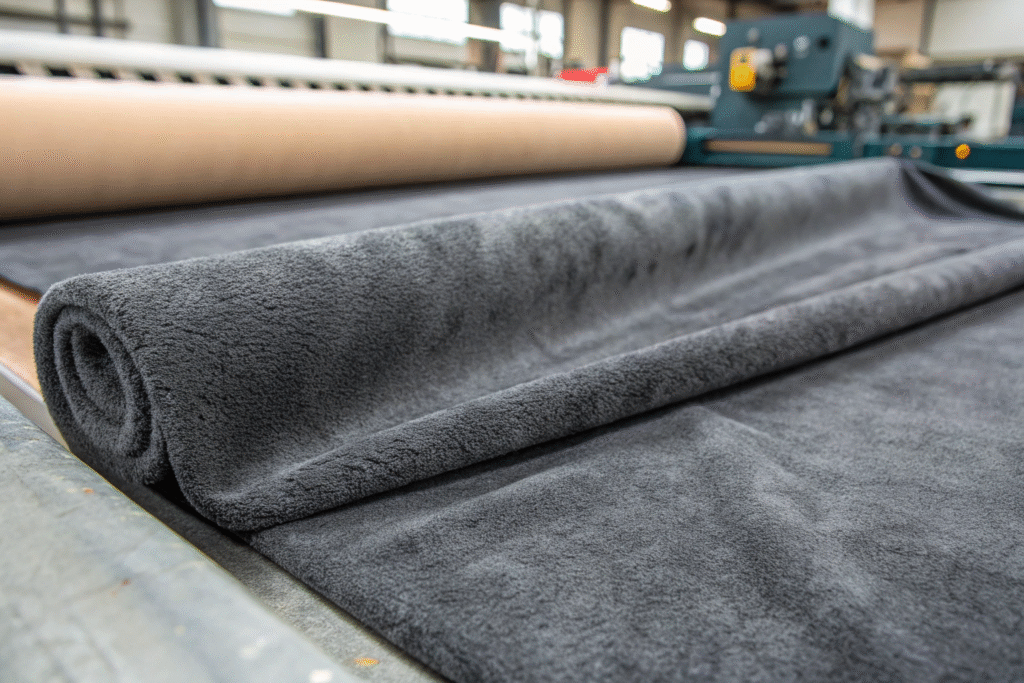
What is the difference between sueding and sanding?
The terms are often used interchangeably, but technically, "sanding" is the broader category, while "sueding" describes a specific, intense result. Think of sueding as a heavy-duty sanding process. Both methods use abrasive rollers, but sueding typically involves more rollers, greater pressure, or coarser grits to achieve a deeper nap. Another common point of confusion is the difference between brushed fabric and sueded fabric. Brushing typically uses wire brushes to raise the nap, while sueding/sanding uses abrasive rollers, often yielding a more consistent and controlled surface texture.
How does sueding affect fabric durability?
A common concern is whether sueding weakens the fabric. The process does abrade the surface fibers, which can potentially reduce the fabric's tensile strength if not done correctly. This is where quality control is critical. Our quality control team performs pre-production tests on every batch to determine the optimal sueding parameters. We ensure that the aesthetic benefits are achieved without falling below our strict strength standards, which often exceed international norms like those verified by SGS testing. The result is a fabric that is both beautifully soft and durably constructed.
Peaching vs. Sueding: Which finish is right for your design?
Choosing between peaching and sueding comes down to the desired aesthetic, handfeel, and end-use of your garment. Peaching offers a refined, subtle texture that maintains a relatively smooth appearance. It's perfect for designs that require a soft, silky handfeel without a obvious fuzzy look. Sueding, in contrast, creates a bold, tactile texture with a visible nap. It delivers a cozy, inviting feel that is immediately noticeable.
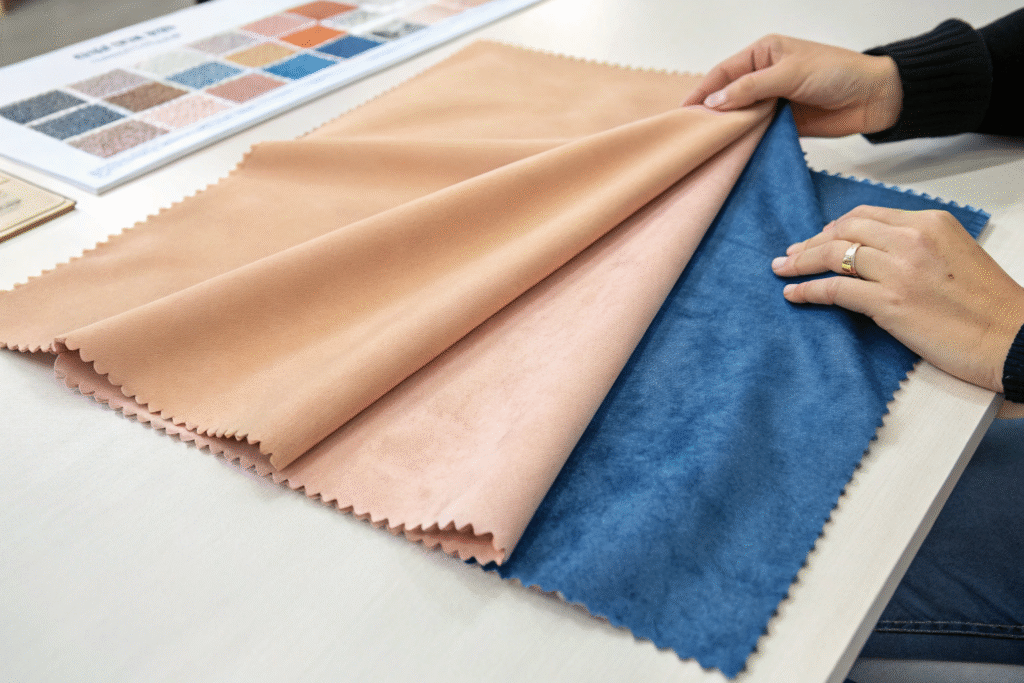
When should you choose a peached finish?
Choose a peached finish for products where a lightweight, smooth-drying, and sophisticated softness is key. It is an excellent choice for:
- Lingerie and loungewear, where comfort against the skin is the top priority.
- High-performance athletic apparel, as the smooth yet soft surface reduces chafing and wicks moisture effectively.
- Lining fabrics for jackets and coats, providing a comfortable slip and a thermal barrier.
The process works exceptionally well with our recycled polyester fabrics, adding an eco-friendly luxury that appeals to the European market.
When is a sueded finish the better option?
A sueded finish is ideal when you want to project warmth, comfort, and a robust, casual texture. It is the go-to choice for:
- Heavyweight sweatshirts and hoodies, where the plush interior feels cozy.
- Winter apparel like jackets and pants, as the deep nap traps heat effectively.
- Upholstery and home textiles, creating an inviting atmosphere on sofas and drapes.
We often apply sueding to our organic cotton fleece collections, combining natural materials with a premium finish for brands that value sustainability and comfort.
How to source quality peached and sueded fabrics from Asia?
Sourcing these specialty finishes requires a partner with proven expertise. The mechanical action must be precisely controlled; too little and the effect is insufficient, too much and the fabric is weakened. At Fumao, our integrated supply chain allows us to manage this process from weaving to finishing, ensuring a consistent result every time. Our technical team can guide you on the right base fabric and finish weight for your specific application, avoiding costly mistakes.
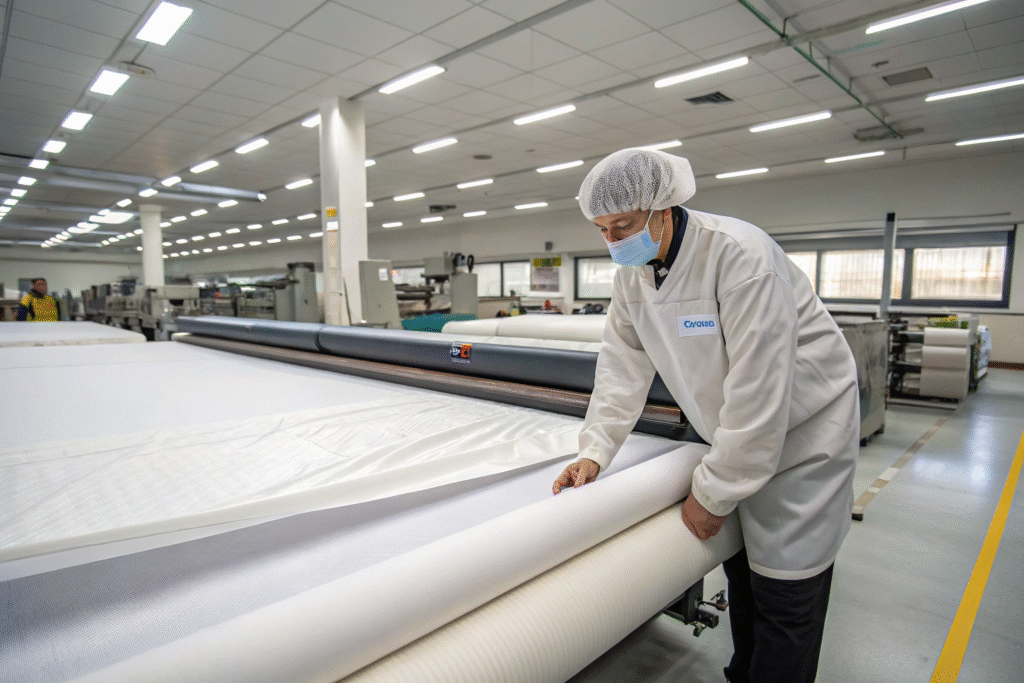
What quality checks are vital for brushed fabrics?
When you import peached or sueded fabrics, insist on specific quality reports. First, check for pilling resistance, as a raised nap can be prone to tangling. We test for this using the Martindale method. Second, colorfastness to rubbing is critical; the finished surface can be more susceptible to color loss during abrasion. Our in-house lab provides these test reports with every bulk order, giving you the same confidence we provide to our partners in the EU and US markets. This due diligence ensures the beautiful finish lasts the lifetime of the garment.
Why is supplier communication key for custom finishes?
Effective sourcing goes beyond just placing an order. It's about clear communication. Provide your supplier with a reference sample of the exact handfeel you want. Discuss the end-use of the garment so they can advise on the most suitable and durable finish. Inquire about their logistics and customs clearance process for finished fabrics, especially with evolving trade regulations. A good partner, like us, will proactively manage these details, offering transparent sailing schedules and secure payment methods to make your import process smooth and predictable.
Conclusion
Peaching and sueding are more than just finishing touches; they are transformative processes that add tangible value, comfort, and a luxury appeal to fabrics. From the subtle softness of a peached polyester in activewear to the cozy embrace of a sueded cotton in loungewear, these techniques allow designers to create standout garments that customers love to wear and touch. Understanding the nuances between them—the process, the ideal applications, and the quality benchmarks—empowers you to make informed sourcing decisions that elevate your collections.
If you are looking to develop your next line of ultra-soft apparel with reliable peaching or sueding finishes, we should talk. Our team manages the entire process from yarn to final inspection, ensuring premium quality and consistent delivery. For a direct conversation about your project, please contact our Business Director, Elaine, at elaine@fumaoclothing.com. Let's co-create value for your brand.

